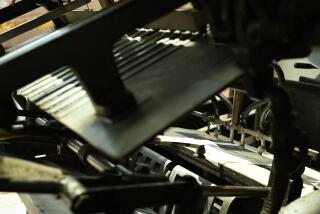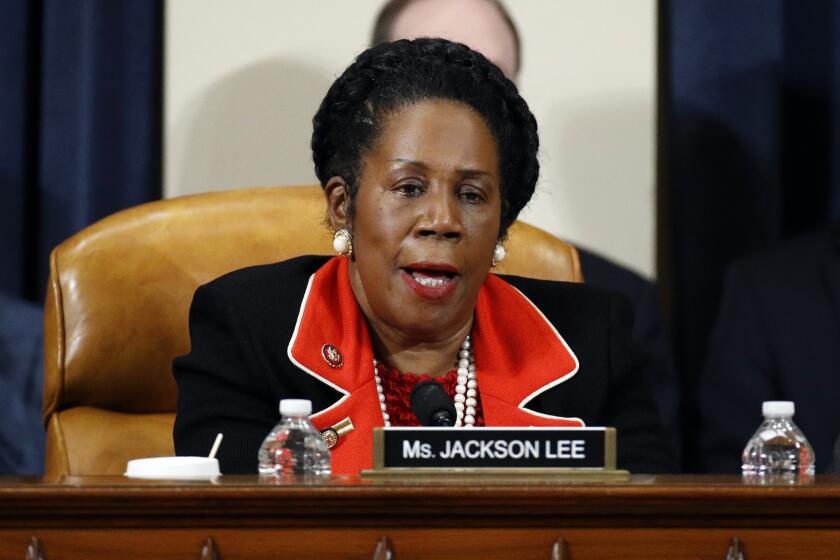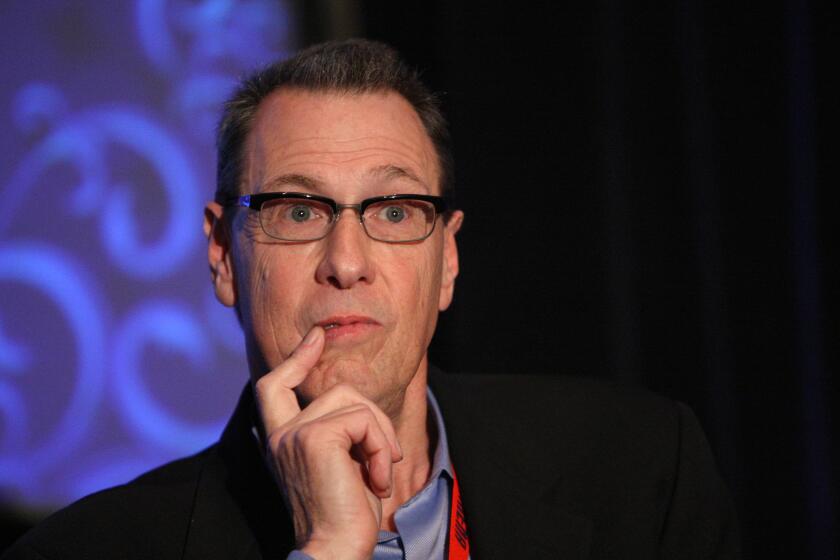Waldo Hunt dies at 88; entrepreneur revived the pop-up book as art form
Waldo Hunt, a Los Angeles entrepreneur who ushered in the modern renaissance in pop-up books when he revived the art form in the U.S. in the 1960s, has died. He was 88.
Hunt, who was also a major collector of pop-up books, died Nov. 6 of congestive heart failure at a hospital in Porterville, Calif., said Kimberly Hunt, one of his three daughters.
“He was such an important publisher of pop-up books who really advanced them technically. The pop-up designers who worked for him were amazing creative engineers,” said Cynthia Burlingham, director of the UCLA Grunwald Center for the Graphic Arts at the Hammer Museum
David Zeidberg, director of the library at the Huntington Library, recalled that Hunt was fascinated and motivated by the intricate engineering that went into books that can go from flat to 3-D structures with the turn of a page.
“Pull a tab . . . in any of Wally’s books, and Disneyland appears,” Zeidberg said.
Waldo Henley Hunt was born Nov. 28, 1920, in Chicago, to Frank Hunt, a minister, and his wife, Edith. After growing up around San Mateo, Calif., Hunt attended a local junior college, then joined the Army during World War II and fought in the Battle of the Bulge, his family said.
A career in books with seemingly magical movable parts was a detour for Hunt, who returned from the war to open an ad agency in Los Angeles. When he sold it to Compton, a bigger firm in New York City, he went along as part of the deal but became disenchanted with the work.
“I needed something that would be all mine,” Hunt told The Times in 2002.
While strolling down Fifth Avenue, he became mesmerized by a children’s pop-up book from Czechoslovakia displayed in a toy store window.
The first golden age of movable books began in the late 1800s, when European publishers crafted elaborate books for children, and ended with the onset of World War I. With Hunt’s epiphany, the second golden age was about to begin.
“I knew I’d found the magic key,” Hunt said in the 2002 Times interview. “No one was doing pop-ups in this country. No one could afford to make them here. They had to be done by hand, and labor was too expensive.”
He started another firm, Graphics International, and produced a series of pop-up ads featuring zoo scenes as part of a magazine campaign for Wrigley’s gum. Soon, his firm was creating pop-up table decorations and greeting cards for Hallmark.
In 1965, Hunt got his big break in publishing from Bennett Cerf, then president of Random House. Hunt sold the book “Bennett Cerf’s Pop-Up Riddles” to General Foods as a product promotion that could be obtained for a dollar and two Maxwell House coffee labels.
Within two years, Hunt had 30 pop-up titles, mostly aimed at children, in production for Random House, he later said.
By then, Hunt had become expert at finding skilled paper engineers and production facilities in countries where the artistry and hand assembly were more affordable.
At first he turned to Japan, but later work was done in Mexico, Colombia and Singapore.
After Hallmark bought Graphics International in the late 1960s, Hunt returned to Los Angeles and founded what became known as Intervisual Books to package and produce pop-ups, or movable books.
For decades, his firm and his team of master paper engineers dominated the market for pop-ups. As of 1996, Intervisual had produced 1,000 movable books. Disney was a major client, with 150 titles.
Along the way, Hunt also began collecting movable books, amassing at least 4,000 antique and contemporary titles. He gave about 500 antique pop-ups to UCLA before deciding to showcase them in the Waldo Hunt Children’s Museum, opened in 1994 within his Santa Monica offices.
More than 300 works, most from his collection, were featured in a 2002 exhibit, “Pop Up! 500 Years of Movable Books” at the Los Angeles Central Library.
After retiring in 2002, he moved from his home of nearly 30 years in Encino to Springville, Calif., to live near his daughter Kimberly.
Intervisual is now part of Dalmatian Press.
Among Hunt’s favorite Intervisual books were David Pelham’s “The Human Body,” a best-seller from the 1980s; “Andy Warhol’s Index,” a book complete with pop-up tomato paste can and castle; Jan Pienkowski’s “Haunted House,” an all-time best-selling pop-up for children; and “How Many Bugs in a Box?,” a classic children’s book by paper engineer David A. Carter, who worked for Hunt for seven years.
“Wally was a truly gregarious guru,” Carter told The Times. “He was very, very popular in the European markets. He would get up there and be singing songs. His personality is what really drove it. He was a walking party, and he took care of business too.”
Hunt is survived by his wife of 56 years, Patricia; their daughters, Kimberly and Jamie; a daughter, Marsha, from a brief first marriage; three grandchildren; and a brother, Randy.
More to Read
Start your day right
Sign up for Essential California for the L.A. Times biggest news, features and recommendations in your inbox six days a week.
You may occasionally receive promotional content from the Los Angeles Times.







